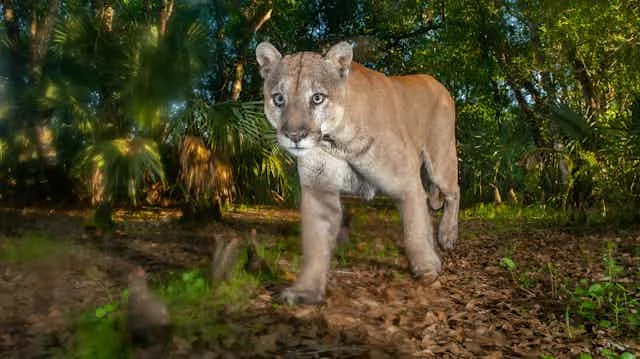
The Florida Wildlife Corridor: A Lifeline For Panthers And Bears
Imagine witnessing a Florida panther stealthily traversing 400 miles from the Big Cypress Swamp to the Okefenokee Swamp, unseen by any human. Though no one has documented this journey, emerging evidence suggests it may indeed take place.
Florida panthers once roamed the Southeast U.S., but their population has dwindled to about 200, primarily concentrated in southwest Florida. Young males occasionally venture northward, escaping pressure from adult males, though dire encounters with hunters threaten their survival. To thrive, large mammals like the Florida panther and black bear require expansive habitats, which are now accessible thanks to the Florida Wildlife Corridor (FWC), a project celebrating its 15th anniversary this year.

Since the 1980s, efforts led by researchers from the University of Florida laid the groundwork for the FWC, a vast interconnected wildlife habitat that now spans 18 million acres—almost half of Florida's territory. Of these, ten million acres are safeguarded from development, while the remaining are targeted for future conservation.
The importance of the FWC lies not just in wildlife protection but also in securing essential ecosystem services, such as water quality and flood management. These expansive green corridors allow species to travel safely and maintain healthy populations, while also benefitting human communities through improved environmental services.

However, Florida faces rapid population growth, with about 300,000 new residents each year, which has led to habitat loss at an alarming rate of 60,000 acres annually. This rapid urbanization highlights the pressing need for concerted conservation efforts to secure lands not yet under protection.
Conservation efforts have included bipartisan legislative measures, like the Florida Wildlife Corridor Act signed by Governor Ron DeSantis in June 2021. This legislation has renewed vigor for land acquisition specifically for conservation purposes, with budgets earmarked for ongoing protection measures.
Despite these progressions, ongoing discussions surrounding the allowance of bear hunts have sparked concern. As highlighted by Grant Gelhardt of the Florida Sierra Club, current black bear populations do not warrant hunting. Protecting bears involves non-lethal measures like bear-proof trash cans that minimize human-wildlife conflicts, reinforcing that coexistence is possible without resorting to culling.
Conclusion: As Florida continues to grow, the necessity of the FWC remains paramount in sustaining wildlife and their habitats amidst increasing urban sprawl. With further public support and scientific backing, conservation strategies can secure a future not just for Florida's wildlife, but also for its human residents. How can Floridians contribute to preserving this vital corridor for generations to come? Share your thoughts in the comments below!